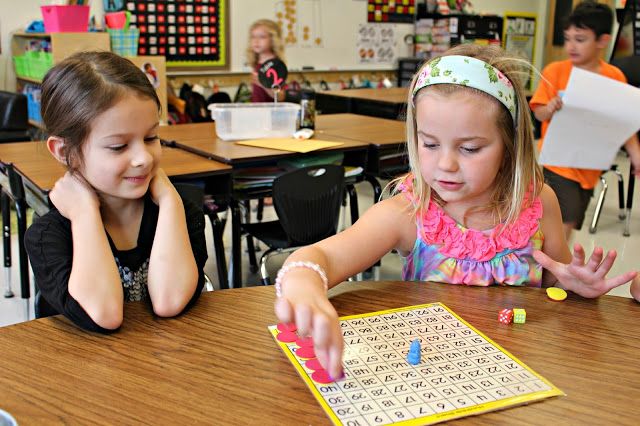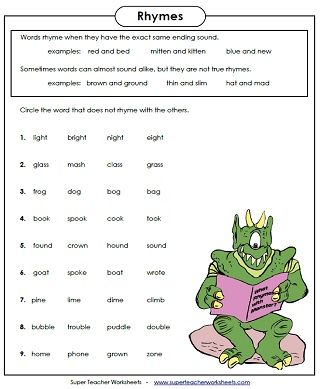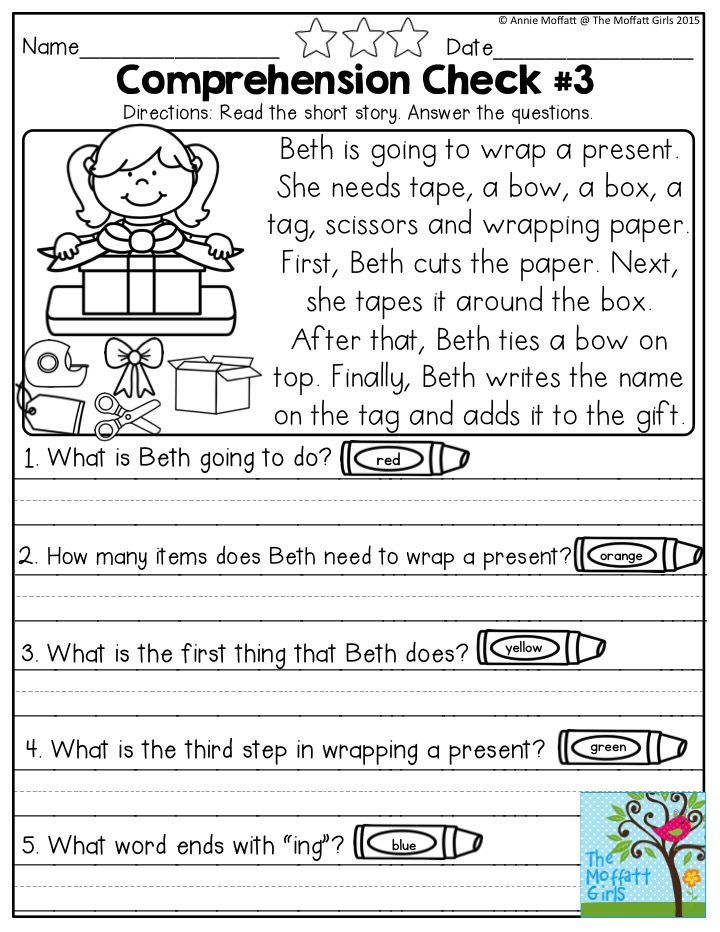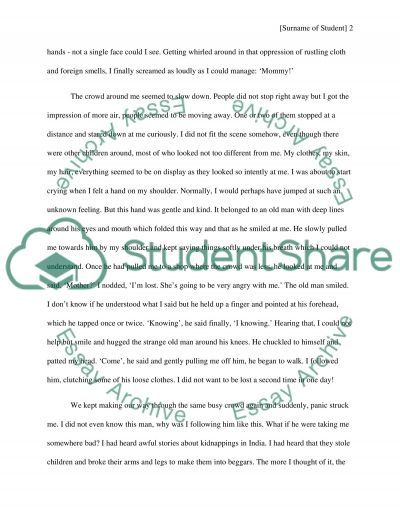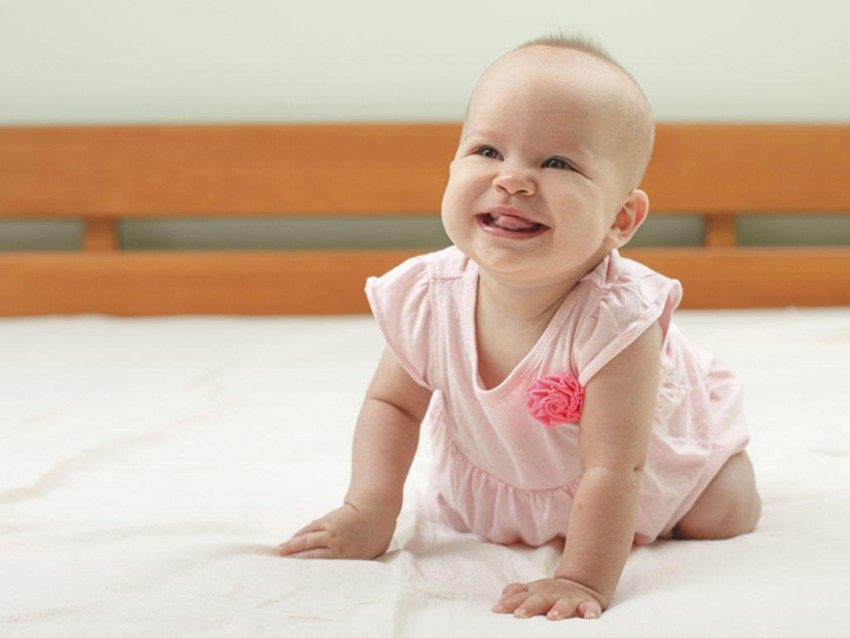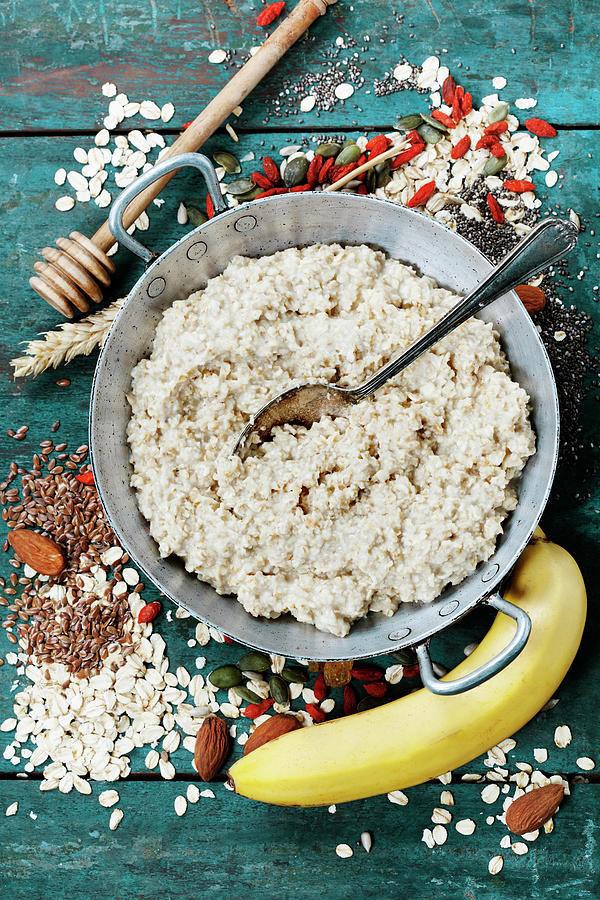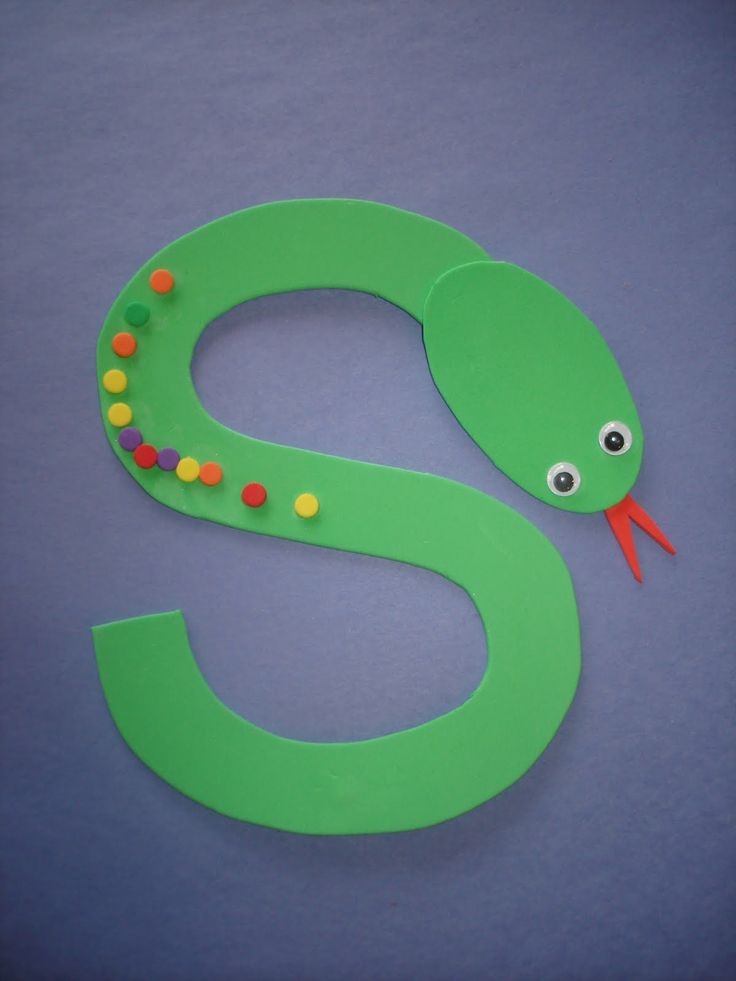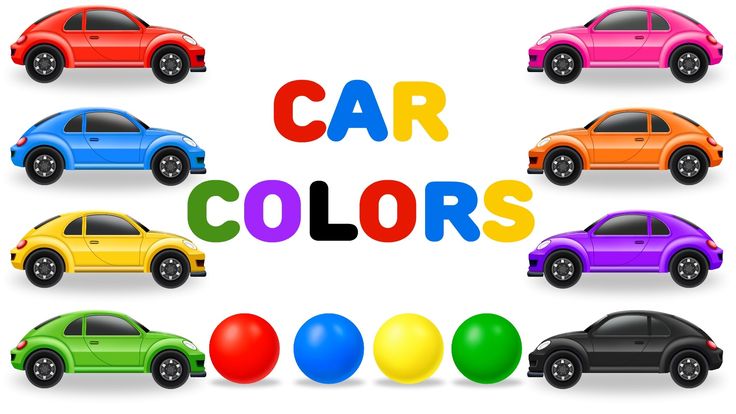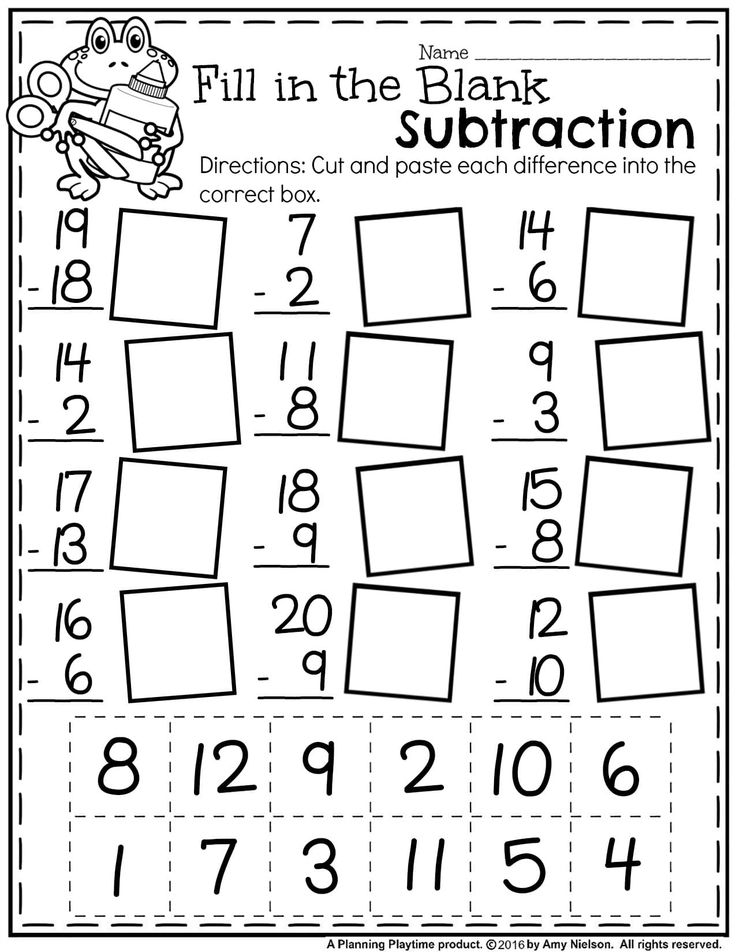Math in preschool
Mathematics in Preschool – Mathematics Methods for Early Childhood
Preschool children are very active, and any program and teacher must take that into account. Emotionally, preschoolers are inquisitive and explorative. Cognitively, they are in the preoperational stage of development in which they begin to engage in symbolic play and learn to manipulate symbols. However, Piaget noted that children at this stage do not yet understand concrete logic. Children at this stage learn through pretend play.
During the first half of the preoperational stage, children are in the “symbolic function substage.” Children at this stage are generally two- to four-years old. They let one object stand in for another and use symbols and signs, such as numbers. They do this through pretend play; therefore, give your preschool children as much time as possible for imaginative play. This then leads to the “intuitive thought substage” in which children are not logical, but think intuitively.
Children at this stage ask many questions and are very curious.
Douglas Clements (2001), suggests that we need preschool mathematics for four reasons: 1) Preschoolers experience mathematics at a basic level, and that needs to be improved, 2) Many children, especially those from minority backgrounds or underrepresented groups, have difficulty in school mathematics and therefore preschool teachers should address those equity issues, 3) Preschoolers do possess informal mathematical abilities and use mathematical ideas in real life, and preschool teachers should capitalize on their interests, and 4) brain research has shown that preschoolers’ brains undergo significant development, their experiences and learning affects the structure and organization of their brains, and preschoolers’ brains grow most as a result of complex activities (Clements, 2001).
Preschool mathematics can be divided into two groups: numerical and measurement. Numerical activities are discrete while measurement activities are continuous.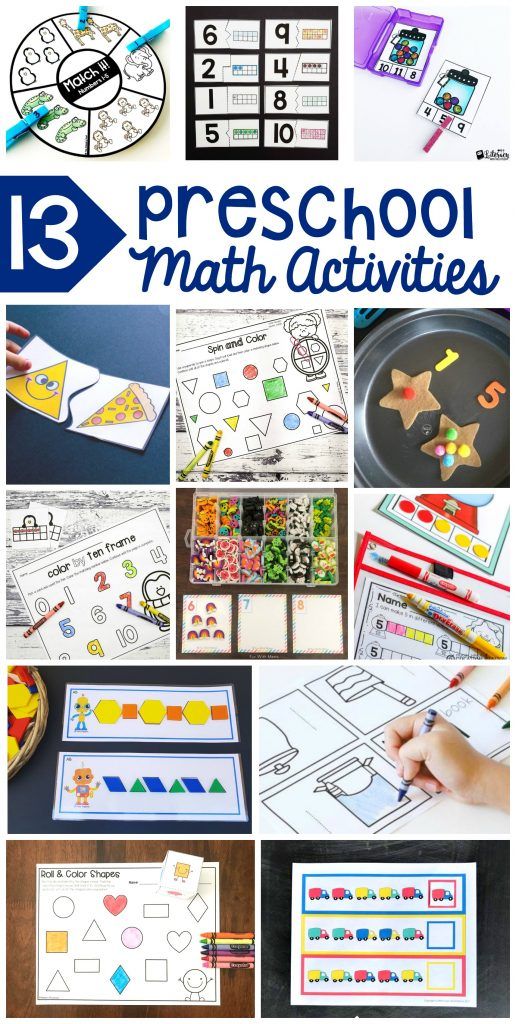 Numerical concepts ask the question, “How many?” and are referred to as discrete quantities because they can be counted.
Numerical concepts ask the question, “How many?” and are referred to as discrete quantities because they can be counted.
Mathematics during the preschool years should focus on number, geometry, measurement, algebra and patterns, and problem-solving. At age three, children can hold up a number of fingers to indicate a quantity.
Number
is the ability to say the numbers in order and involves the memorization of numbers; meaningful or is the ability to assign a number to the objects counted. Children at age three can hold up fingers to indicate a quantity and by age four can count to five or ten, and can tell you what comes next. say how many of something there are, such as one, two, three, four, five; and they answer the question “How many?” tell the position of something in the list, such as first, second, third, fourth, fifth, etc.
There are “rules” for writing and saying number words; it is the base-ten number system that we use (10 digits, 0-9) and we place the greater value on the left.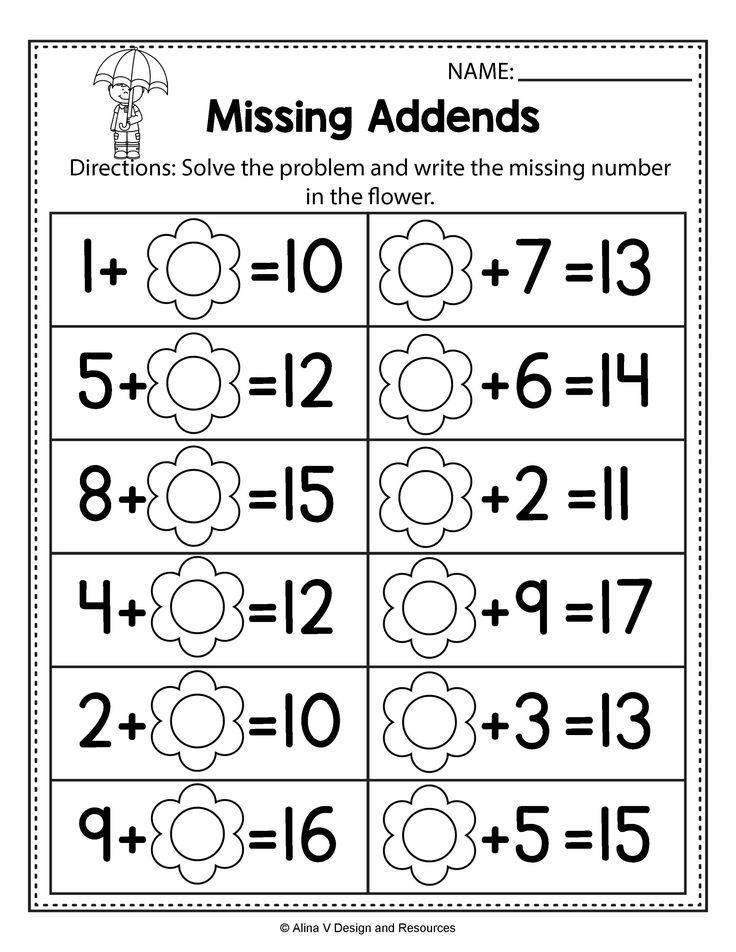 For example, three hundred sixty-two is written as 362. According to Seo and Ginsburg (2004), a child’s ability to write and say numbers does not guarantee their application. Just because a child can say numbers does not mean that they know the quantity associated with that number. Therefore, preschool children begin to put their understanding of “one” to use as they “count up” and develop the meaning of adding one more.
For example, three hundred sixty-two is written as 362. According to Seo and Ginsburg (2004), a child’s ability to write and say numbers does not guarantee their application. Just because a child can say numbers does not mean that they know the quantity associated with that number. Therefore, preschool children begin to put their understanding of “one” to use as they “count up” and develop the meaning of adding one more.
Preschool children must develop the concepts of order and seriation. is the ability to count a number of objects once and only once. is the process of putting objects in a series, for example from smallest to largest. Additionally, young children begin to group objects by their characteristics, such as yellow and blue.
Geometry
Preschool children can use directional words such as “up and down,” and “over and under” as well as comparing words such as “bigger and smaller,” or “longer and shorter.” Additionally, children at ages three to four recognize and name shapes.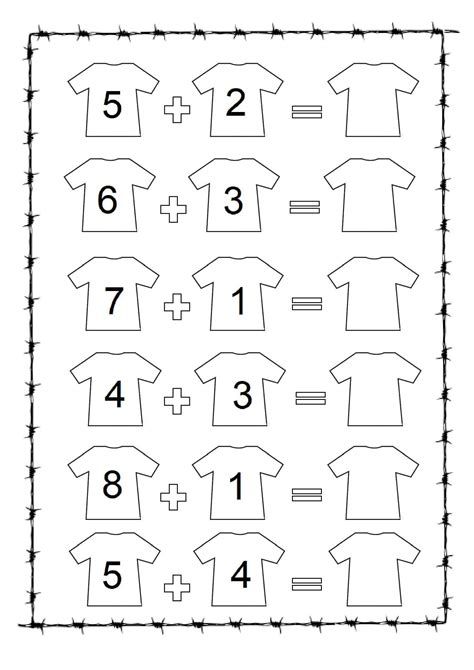 Naming a shape is mathematics, it is language arts. Mathematics comes in as students recognize and classify the attributes of those shapes. Additionally, students are beginning to compose and decompose shapes. For example, they may be able to make a square with two triangles.
Naming a shape is mathematics, it is language arts. Mathematics comes in as students recognize and classify the attributes of those shapes. Additionally, students are beginning to compose and decompose shapes. For example, they may be able to make a square with two triangles.
Measurement
Three-year olds can lay two objects side-by-side and tell which one is longer. By age four, children begin to use non-standard units to measure things. For example, they can tell you how many shoes long a desk is, although they need to use many shoes. They are not yet ready to use one shoe repeatedly.
Children in preschool do not learn to tell time, but they are learning the concept of time. They talk about yesterday, today, and tomorrow.
Algebra and Patterns
Preschool children do algebra by recreating patterns and making their own patterns. Children can recognize, describe, extend, and create patterns from a simple repeating pattern such as “red, blue, red, blue” to a more complex pattern such as “red, red, blue, red, red, blue.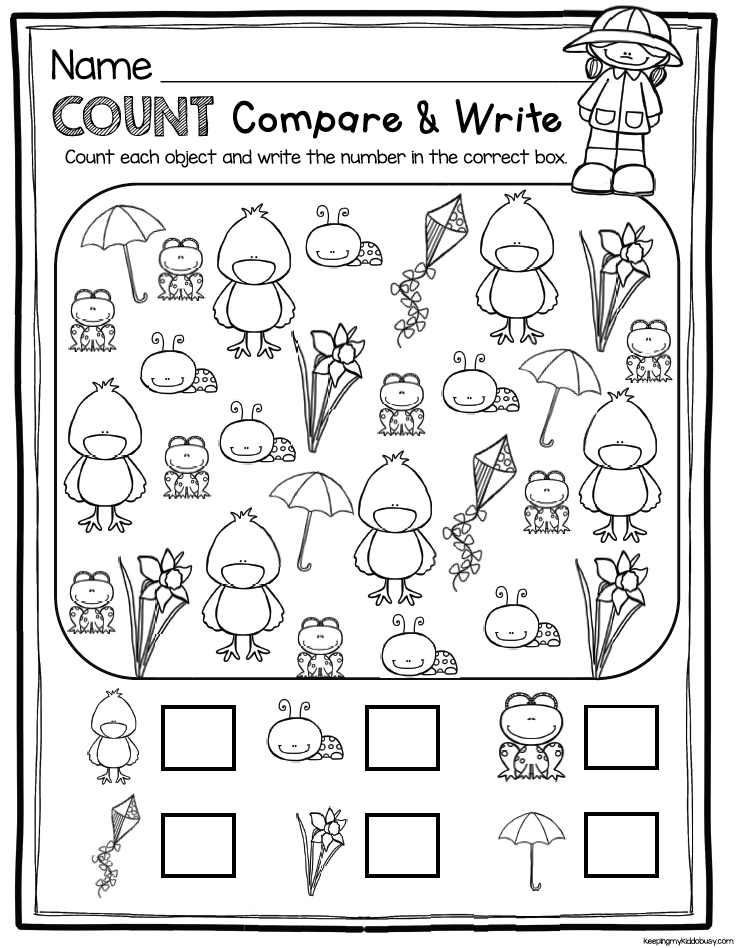 ” They also notice growing patterns such as “1, 2, 3, 4” or “2, 4, 6, 8.”
” They also notice growing patterns such as “1, 2, 3, 4” or “2, 4, 6, 8.”
Problem-Solving
Problem solving is critical at all levels. Allow students to solve a problem without stepping in too quickly. Children begin to link words and concepts; therefore, teachers can begin to use story problems for teaching mathematics. In kindergarten, the words should be simple and short and by first grade, students begin to write their strategy in the problem-solving process.
Each of these content areas will be further developed in subsequent chapters.
Critical Mathematics Concepts for Preschool Children
Activities in the preschool classroom must incorporate the use of manipulatives and hands-on learning, and the main emphasis should be on number sense. Do not use worksheets or independent practice in the preschool classroom, instead plan activities that will develop a strong sense of number and patterns. The following domains are critical concepts as you teach preschool children to be mathematically proficient:
Counting and Cardinality
Number sense is the foundation for success in mathematics and is the first vital skill for preschool children (Resilient Educator, 2021).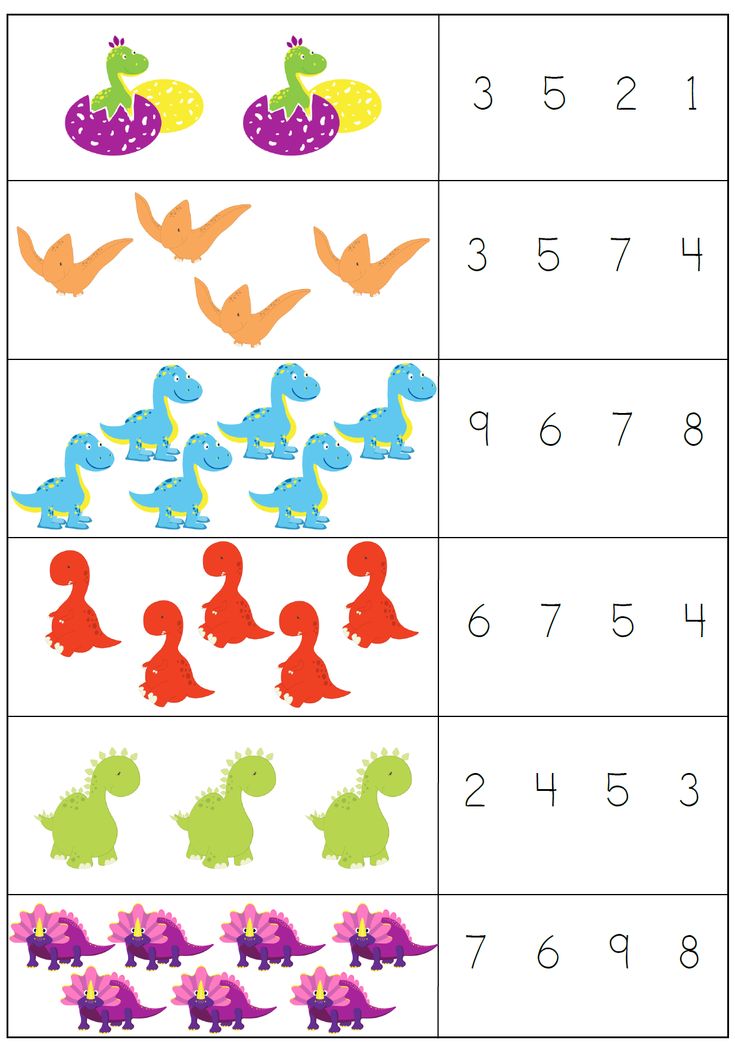 The ability to count accurately is a part of number sense, but also to see the relationship between numbers, such as addition and subtraction. Children should be able to demonstrate simple counting skills before kindergarten. This includes counting to 20, ordering numbers, identifying how many are in a set without counting (subitizing), and understanding that the quantity does not change regardless of the arrangement of the items. Additionally, preschool children should understand cardinality, in which the last number said is the number of items in the set.
The ability to count accurately is a part of number sense, but also to see the relationship between numbers, such as addition and subtraction. Children should be able to demonstrate simple counting skills before kindergarten. This includes counting to 20, ordering numbers, identifying how many are in a set without counting (subitizing), and understanding that the quantity does not change regardless of the arrangement of the items. Additionally, preschool children should understand cardinality, in which the last number said is the number of items in the set.
Operations and Algebraic Thinking
Mathematical ideas become “real” when teachers and students use words, pictures, symbols, and objects. Young children are naturally visual and can build those relationships between numbers and the item represented; therefore, teachers must use pictures and objects to clarify that relationship. As children learn to count, they will learn that the number symbol represents the number of items shown.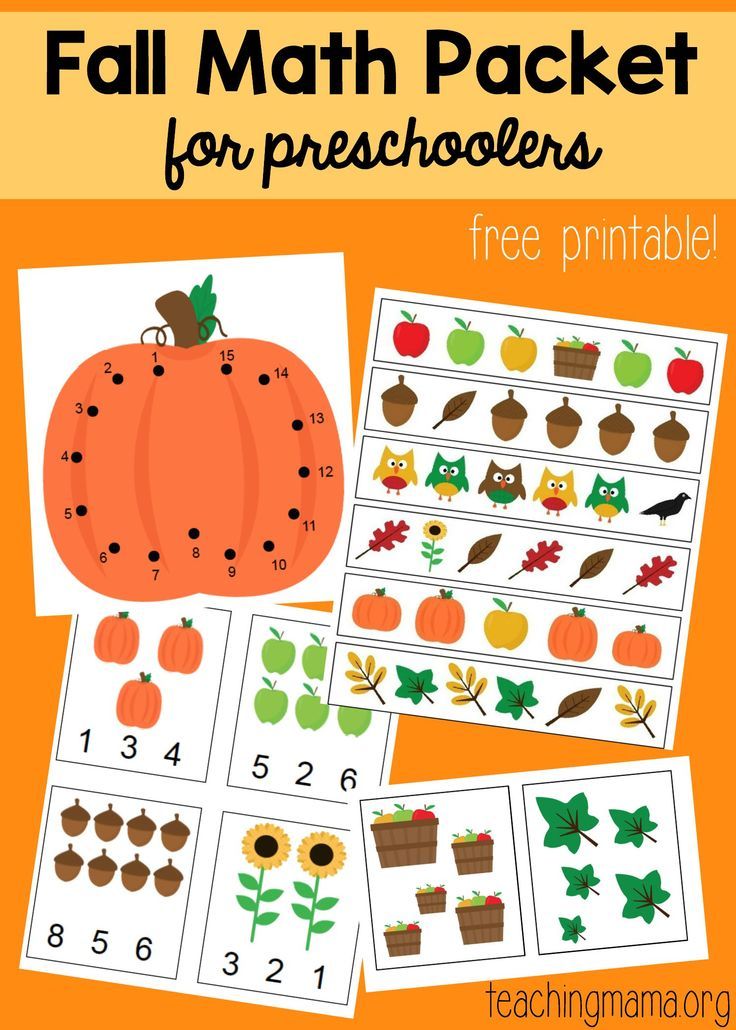
Patterns are things that repeat in a logical way. Manipulatives can help children sort, count, and see patterns. An AB pattern means that two items alternate, such as red, blue, red, blue, red, etc. ABC patterns means that three items are in the pattern, such as bear, cow, giraffe, bear, cow, giraffe, etc. Students will learn to make predictions about what would come next in a pattern.
Number and Operations in Base 10
Preschool children begin to understand that the number “ten” is made up of “ten ones,” although this is a difficult concept. Teachers should allow children to count on their fingers one to ten.
Showing students the meaning of the words more, less, bigger, smaller, more than, and less than can help young children understand estimation.
Measurement and Data
Finding length, height, and weight using inches, feet, pounds, or non-standard units is measurement. Also in this skill area is measurement of time. Teachers should ask their students to notice objects in their world and compare them, for example, “The stepstool is bigger than the chair.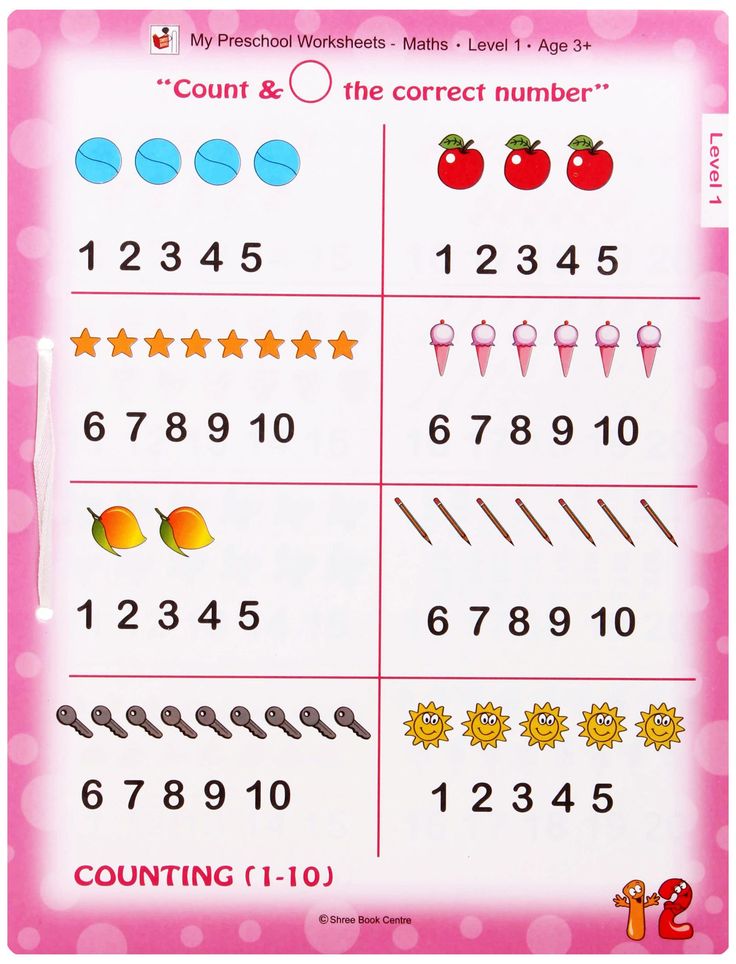 Do you think it will fit under the chair?”
Do you think it will fit under the chair?”
Sorting is a skill that preschool children should do often. One way to sort is by color; another way is by another attribute. Teachers can ask students to count the toys in a basket, and then sort them based on size, color, or their purpose. Check out this excerpt from the book Exploring Math and Science in Preschool by the National Association for the Education of Young Children – Sorting Activities for Preschoolers by William C. Ritz.
Geometry
Spatial sense is geometry, but at the preschool level it is the ability to recognize shape, size, space, position, direction, and movement. Teachers can talk with children about shapes – count the sides or describe the shape. Furthermore, talk with children about shapes in their world, such as “The pizza is round,” or “The sandwich is a rectangle.”
Calendar Time
Morning calendar time is a daily part of many preschool classrooms. There is a ritual when children sit on the floor and talk about today, look at yesterday, find out about tomorrow, and write out the date.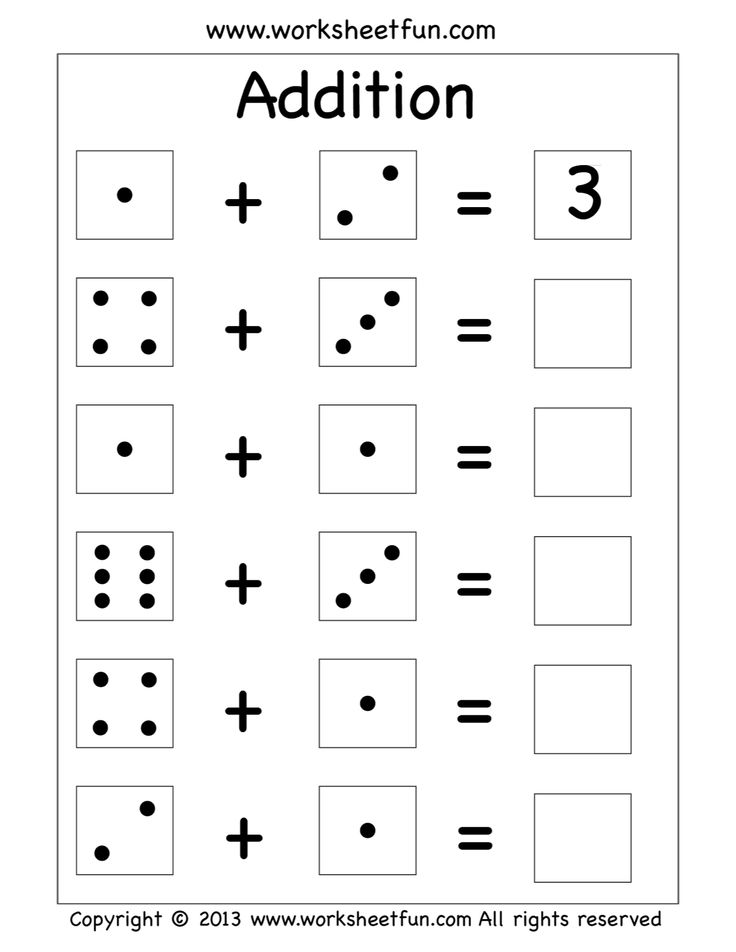 Understanding that time is sequential is critical for young children. They think about before and after, later and earlier, and future and past events. According to Beneke, Ostrosky, and Katz (2008), preschool children generally cannot judge distances or lengths of time. For example, they do not understand that a field trip is in five days and differently than if it is in eight days. And it is different for young children to judge units of time. And although a true understanding of calendar dates comes with maturity, using the calendar to teach other concepts is also valuable time spent in the classroom. For example, vocabulary (month, year, weekend), sequencing (yesterday, today, and tomorrow), and patterns (Monday, Tuesday, Wednesday). They also begin to recognize numbers. Additionally, teachers can use calendar time to teach social skills, colors, letters, and integrate science as they talk about the weather (Beneke, Ostrosky, & Katz, 2008).
Understanding that time is sequential is critical for young children. They think about before and after, later and earlier, and future and past events. According to Beneke, Ostrosky, and Katz (2008), preschool children generally cannot judge distances or lengths of time. For example, they do not understand that a field trip is in five days and differently than if it is in eight days. And it is different for young children to judge units of time. And although a true understanding of calendar dates comes with maturity, using the calendar to teach other concepts is also valuable time spent in the classroom. For example, vocabulary (month, year, weekend), sequencing (yesterday, today, and tomorrow), and patterns (Monday, Tuesday, Wednesday). They also begin to recognize numbers. Additionally, teachers can use calendar time to teach social skills, colors, letters, and integrate science as they talk about the weather (Beneke, Ostrosky, & Katz, 2008).
Manipulatives
Manipulatives are the mainstay of a preschool mathematics classroom (Geist, 2009).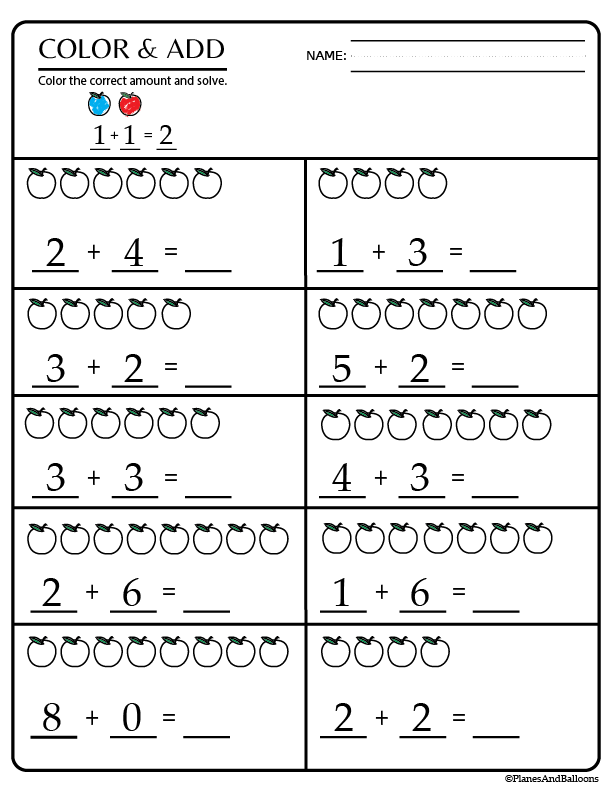 Math are physical objects that are designed to represent explicitly and concretely mathematical ideas (Moyer, 2001). Students need time to explore and manipulate materials in order to learn the mathematics concept. According to Carol Copple (2004), children should be given many opportunities to manipulate a wide variety of things and teachers should provide children to “mess about.”
Math are physical objects that are designed to represent explicitly and concretely mathematical ideas (Moyer, 2001). Students need time to explore and manipulate materials in order to learn the mathematics concept. According to Carol Copple (2004), children should be given many opportunities to manipulate a wide variety of things and teachers should provide children to “mess about.”
One productive belief from the NCTM publication, Principles to Action (2014), states, “Students at all grade levels can benefit from the use of physical and virtual manipulative materials to provide visual models of a range of mathematical ideas.” Students at all grade levels can benefit from manipulatives, but especially at the elementary level. Using manipulatives can
- provide your students a bridge between the concrete and abstract.
- serve as models that support students’ thinking.
- provide another representation.
- support student engagement.
- give students ownership of their own learning.
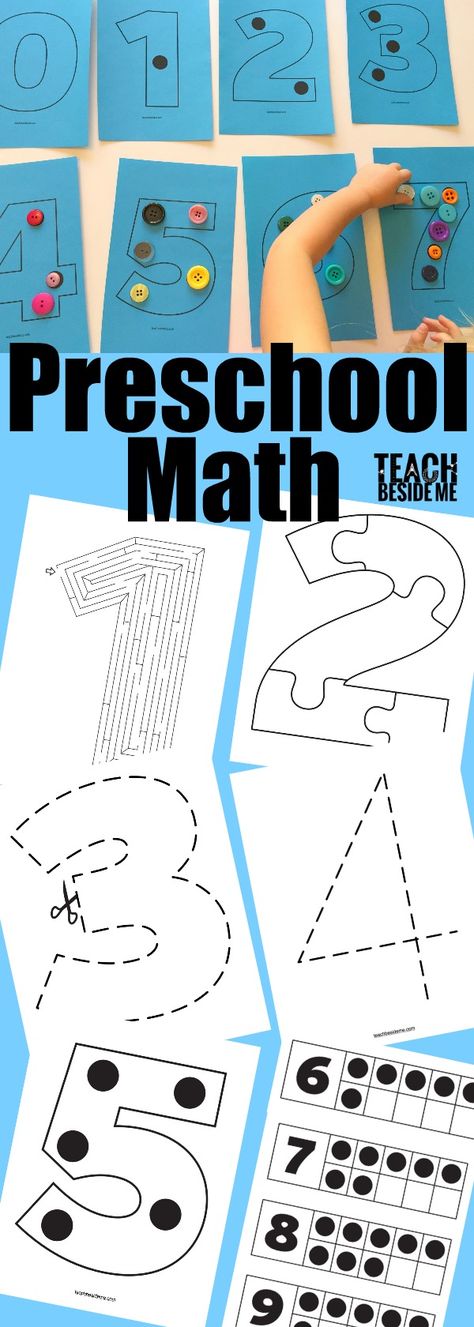
Adapted from “The Top 5 Reasons for Using Manipulatives in the Classroom.”
Everyday activities can be used to promote mathematics. For example, during snack time children divide up snacks, count plates, and notice the one-to-one correspondence between the number of children and the number of napkins needed.
How to Teach Maths to Preschoolers
- Share
Children start developing their mathematical skills while they are still babies exploring their environment and continue into their preschool years.
By the time they are learning formal mathematical concepts in the first grade, the foundation for success is already set.
Here are some tips for how to teach maths to preschoolers at school or at home by using hands-on activities and following a concrete-pictorial-abstract approach.
What are Early Maths Skills?Early maths refers to the mathematical concepts and skills a child builds informally during the first few years. These are also called pre-maths skills or early numeracy skills.
These are also called pre-maths skills or early numeracy skills.
It is essential to first develop these before trying to introduce concepts that are too advanced.
When wanting to introduce your child to maths, you may immediately think of numbers and try to teach your preschooler how to count, recognize the numbers and add or subtract them, but these are really some of the more advanced early mathematical skills.
It’s important to first understand how children learn mathematical concepts.
How Children Learn Maths: The Concrete Pictorial Abstract ApproachThe three stages of learning any mathematical concept are concrete, pictorial and abstract.
The Concrete StageIn the concrete stage, children need to physically experience a concept. They need to develop an understanding of one item by holding one block.
By playing with concrete objects, children form the concept that there can be one object, multiple objects, less objects, more objects, etc.
Many mathematical processes are going on while a child is building a tower of blocks next to his friend. Concepts such as more, less, one more, not enough, how many, plenty, fewer, take away and add on are picked up.
Children compare objects and learn that a value can be attached to objects.
The Pictorial StageIn the pictorial stage, which follows the concrete stage, children are able to see a picture of objects and understand that it represents real objects.
For example, a child can look at a picture and understand that the 4 leaves represent 4 actual leaves.
Later on, a child can see a dice with 4 dots on it and assign the value 4, knowing that the dots could hypothetically represent any object.
They would then be able to add the 4 dots on one dice to the 3 dots on another and say there are 7 dots altogether.
The Abstract StageThis is the final stage of understanding a mathematical concept. It means that a child can look at a sum, e.g. 4 + 3, written in number symbols, and add them without concrete objects or pictures.
The child has matured enough to understand that the symbols 4 and 3 represent a number of objects to be added.
This post contains affiliate links for educational products that I personally recommend. If you purchase through one of them, I earn a commission at no extra cost to you. Read the terms and conditions for more details.
Are Preschoolers In the Concrete, Pictorial or Abstract Stage?Preschoolers are mostly in the concrete stage.
In fact, up until the third or fourth grade, any teacher worth their salt will still introduce a new concept in a concrete way before moving onto books or worksheets with examples to solve.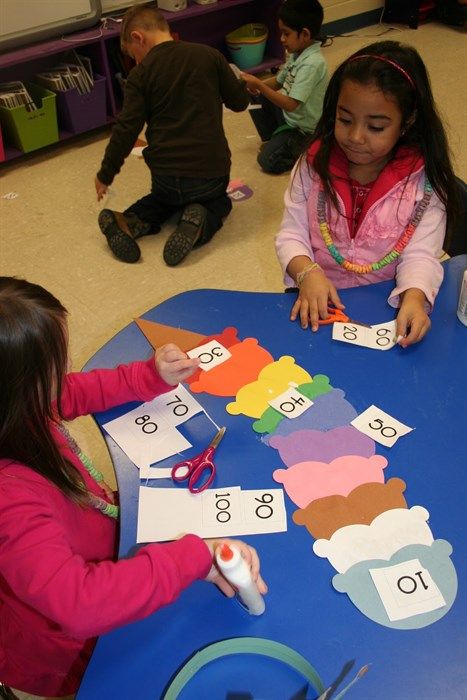
When children understand a concept concretely, it is then much easier to solve abstract problems.
This means that in the preschool years, trying to push a child to count pictures of objects or understand the value of the number symbols is premature and will cause frustration.
You may want to expose your child to numbers (e.g. playing with wooden numbers like these or magnetic number tiles) or rhymes that teach counting, but do not expect your child to understand the value of these numbers yet.
How to Teach Maths to Your Preschooler: 15 Simple ActivitiesThe best way to teach preschoolers mathematical skills is through their main medium of learning – play!
This means that during these early years children don’t need formal lessons, activity sheets and workbooks, or anything that looks more like “real work.”
Here is a list of just a few basic everyday opportunities that double up as the perfect preschool maths activities.
1.
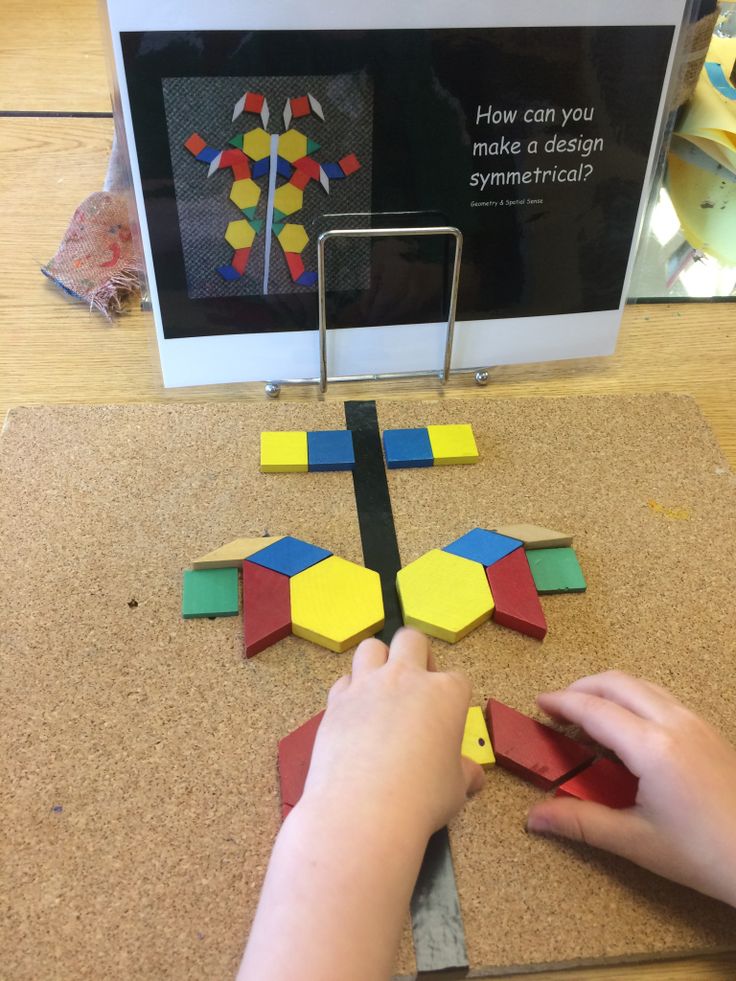 Play With Shapes
Play With ShapesPlaying with foam or wooden shapes familiarises your child with basic geometric shapes, as well as their properties. It teaches shape recognition.
2.
Make Shape PicturesCut basic shapes out of colored paper and make a picture out of them. Children learn to join 2D shapes together to make different forms.
Tangrams (like these) are great for making pictures with shapes.
3.
Build PuzzlesPuzzles are excellent for developing visual perception and will build a child’s understanding of geometry.
Choose good quality wooden puzzles with a wooden tray.
4.
Play With PegboardsPegboards are another great activity for building mathematical skills. They develop number concept and geometrical knowledge.
5.
Build FortsThis may not seem like a math activity, but building forts and other structures and climbing inside them is the first step in a child learning about space and shape. These early play sessions are a must!
These early play sessions are a must!
6.
Use ManipulativesThere are so many benefits of playing with blocks and that children should have opportunities to play with manipulatives daily. Also offer beads, counters or other construction toys. (read about the benefits of Lego too).
Playing with blocks is the first step in building a number concept and every child should have a good set of wooden blocks at home. This set is perfect for the classroom or home.
7.
Make Mud PiesWhen children play in the sandpit and make mud pies and other structures, they begin to use terms such as “I need to make another one,” “There are 3 cakes” or “I made one for each of us.”
8.
Learn Counting SongsCounting songs are a fun way for a young child to learn to count forwards and backwards. This is known as rote counting. They also learn about increasing and decreasing quantity in songs such as “5 Green Bottles. ”
”
9.
Play With NumbersLet your child play with foam, rubber, wooden or plastic numbers in the bath or on a magnetic board. Because they are physical objects, your child can touch them and feel their shapes.
This is far more meaningful to a young child than looking at numbers on an activity page. With time, they will naturally learn to recognize them and know how they are formed.
10.
Make Playdough NumbersPlaydough is one of the best substances out there, with some amazing benefits. Take the previous activity a step further and mould the numbers out of playdough.
This sensory activity will imprint the numbers in your child’s mind far quicker than trying to write the numbers on paper.
11.
Play With ContainersProvide containers of different sizes and shapes and let your child discover the basics of capacity while having fun in the bath or sandpit.
Baking is a great mathematical experience.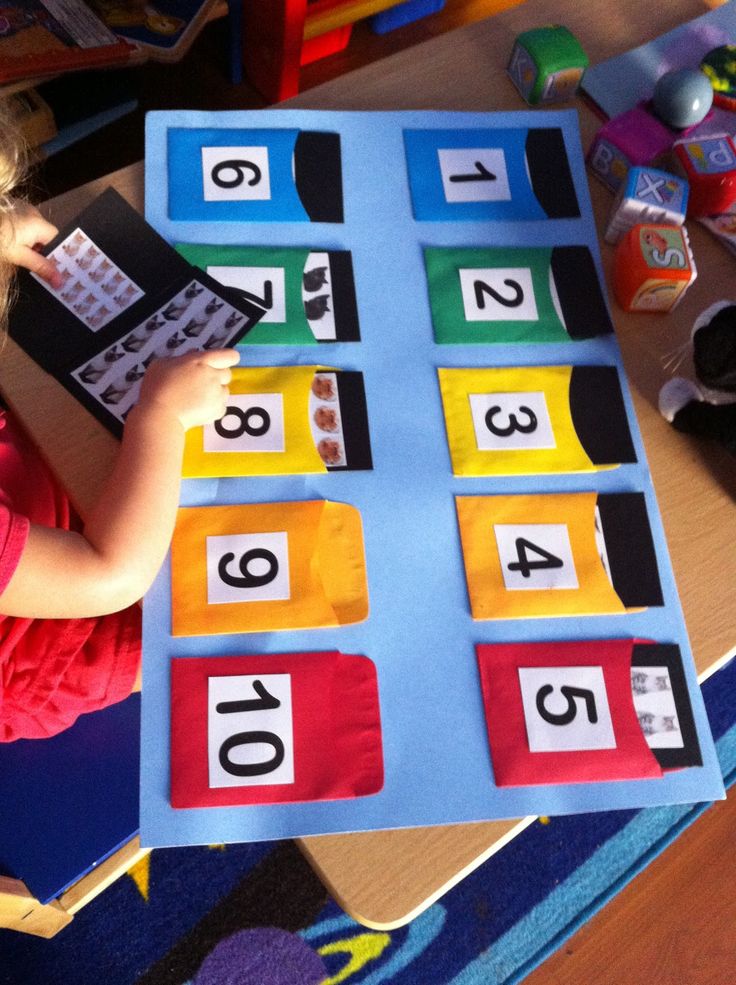 Let your child be involved in measuring the ingredients to introduce them to units of measurement and quantities.
Let your child be involved in measuring the ingredients to introduce them to units of measurement and quantities.
12.
Measure ObjectsAsk your child to measure certain objects – such as a book, table or room – using body parts such as hands or feet, and later objects, such as a block or book. Children must first learn to measure length using non-standard items before they can be introduced to standard measurements.
13.
Talk About TimeFind opportunities daily to talk about time. Use the daily routine as a starting point. Discuss concepts such as the time of day (morning, afternoon) as well as clock time (“I’ll pick you up at 12 ‘o clock when the school bell goes”).
14.
Play With ObjectsGive your child different objects and ask him to feel which are heavy or light and to compare the weight of different objects. Use a balancing scale (or make one) and place various household items on it.
15.
 Problem Solve
Problem SolveProblem solving can be the most, um… problematic, of all the maths tasks! Children in the grades often struggle to visualize problems and what they actually mean.
They often resort to guessing operations (e.g. it says more so I should add) without having any idea what the problem is actually about and how, when visualized, the solution is usually so logical.
The best way to prepare your child for problem solving is to give non-stop opportunities to actually solve real problems!
You need to train your child to develop their critical thinking skills.
You don’t necessarily need to be giving mathematical problems, just general problems that require training the brain to think, and think outside the box!
Allow many opportunities to:
- Build puzzles
- Solve brainteasers such as tangram puzzles
- Solve riddles
- Play games that require thinking
- Play with construction toys (e.
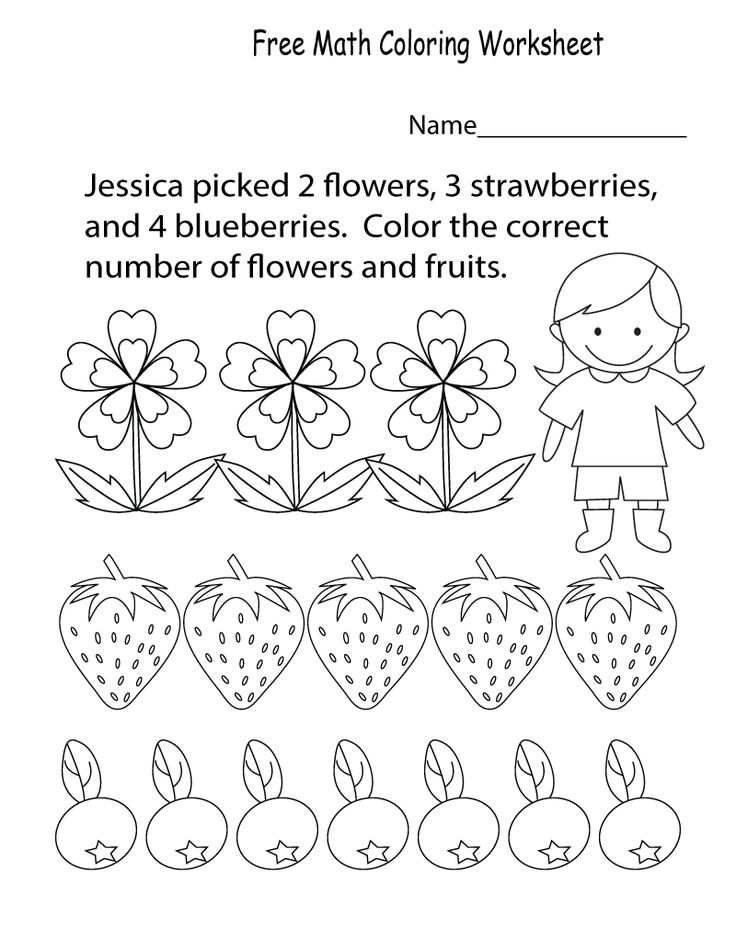 g. figuring out how to make a bridge that doesn’t fall)
g. figuring out how to make a bridge that doesn’t fall) - Discuss problems and solutions during storytime
- Ask your child for solutions to everyday problems
As you can see, most play experiences have hidden opportunities for learning maths.
Learn to recognize them and use them to consciously teach certain skills. Remember to introduce new vocabulary and ask questions constantly during play.
Introduce words such as: heavier, lighter, longer, shorter, earlier, later, more, less, more than, less than, fewer, extra, not enough, altogether, left, another, full, empty, matching, same, different.
I hope you’ve enjoyed reading this article and have some new ideas to try!
Get FREE access to Printable Puzzles, Stories, Activity Packs and more!
Join Empowered Parents + and you’ll receive a downloadable set of printable puzzles, games and short stories, as well as the Learning Through Play Activity Pack which includes an entire year of activities for 3 to 6-year-olds.
Access is free forever.
Signing up for a free Grow account is fast and easy and will allow you to bookmark articles to read later, on this website as well as many websites worldwide that use Grow.
- Share
school preparation, mathematics, counseling
In preschool children, personal qualities, attitude to learning, skills of logical and spatial thinking are most actively formed. They absorb information quickly by memorizing it. Pay attention to the development of the child at an early age. Even in the younger groups of kindergarten, the baby performs minimal mathematical operations. He counts toys when he puts them in the box, forks and spoons when he helps set the table, he knows how many children go to his group. Gradually, teachers teach the kids to sit at the table. Perform simple counting actions on sticks, and also give the concepts of “more-less”, “higher-lower”, “further-closer”.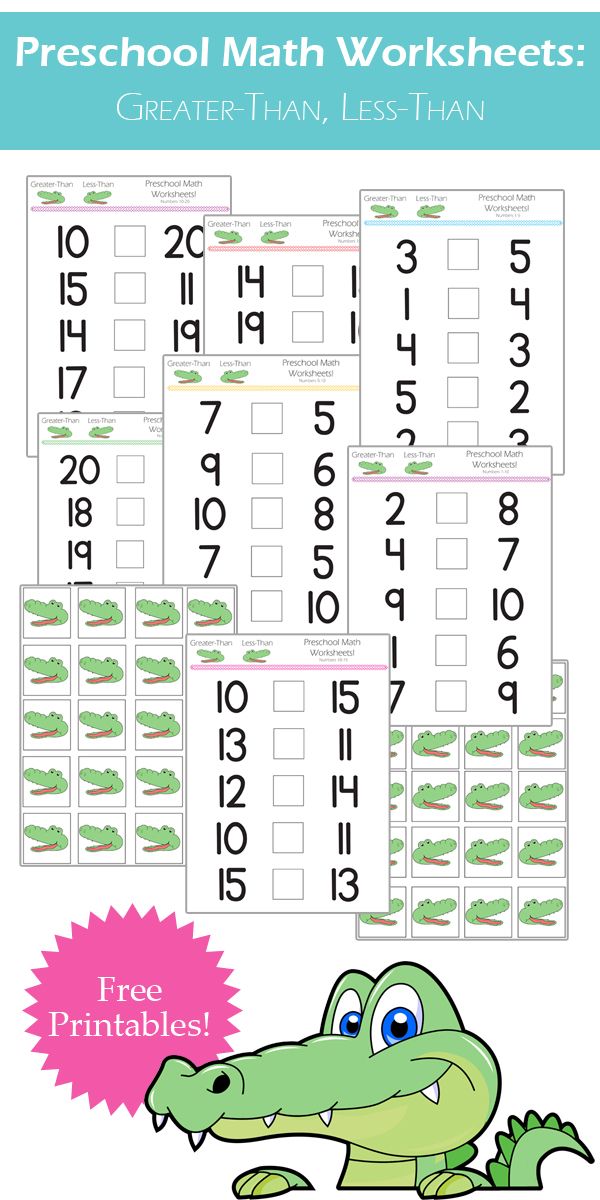
If the child does not attend kindergarten or the quality and quantity of developmental activities leave much to be desired, you can sign up for general developmental lessons. There, younger and older preschoolers are prepared for elementary school, while paying attention to the formation of elementary mathematical concepts. Preparation with experienced teachers for the school curriculum will help to acquire basic mathematical knowledge.
But not all parents can take their child to extracurricular activities. Parents, grandparents can work with the child. But in order for the classes to be as useful as possible, you need to get advice from a teacher-psychologist.
Pre-school activities
Young children are not yet ready for purposeful learning. They do not have motivation and physiological readiness for long intellectual work. The main activity for preschoolers is a game, so the formation and development of abilities should take place in a playful way. Teaching methods offer many games that allow you to master mental counting and learn numbers.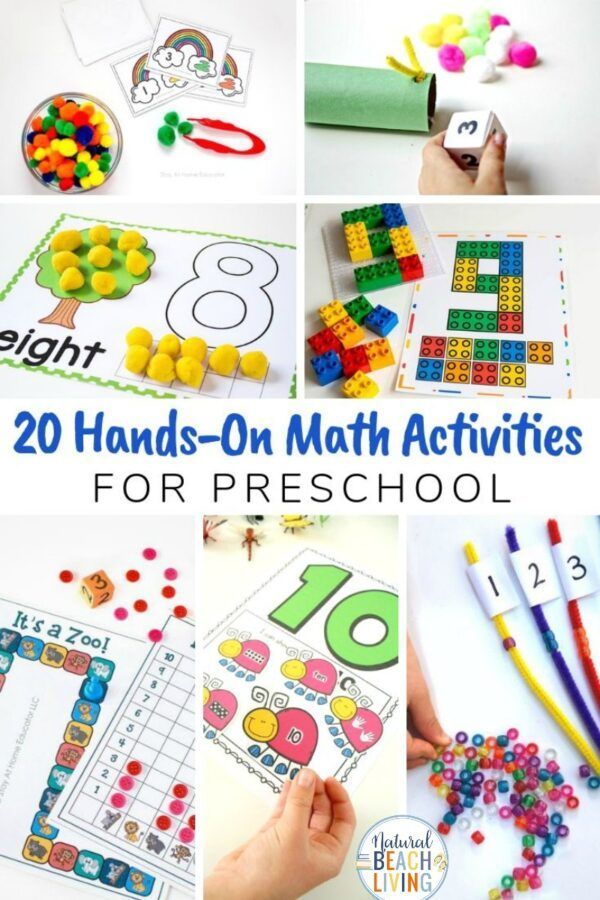 They help to learn how to add, subtract, get acquainted with geometric shapes.
They help to learn how to add, subtract, get acquainted with geometric shapes.
Do not force a preschooler to do tasks that are not interesting to him. If there is no interest, then the task does not correspond to the age, developmental level or personal characteristics of the child. Perhaps he is tired, something is bothering him. It is necessary to offer a different task or change the type of activity, identify and eliminate the cause of discomfort (the desire to have a snack or play with friends).
How to conduct math classes
Preparing for elementary school involves learning using didactic materials and frequent changes in activities. Part of the lesson, the kid solves interesting mathematical problems, then plays active games, where you also need to apply counting skills, choose geometric shapes or numbers. The child sculpts, draws, makes crafts.
Various tasks should be offered that develop counting skills and creativity, the ability to think logically and analyze, and draw conclusions independently.
It is important that the preschooler speaks as much as possible, commenting on his actions and the progress of solving problems. This contributes to a better memorization of information, develops thinking with speech, teaches you to clearly express your thoughts.
Possible difficulties
Teaching and shaping the thinking of children requires patience, knowledge of child psychology, age characteristics. Younger preschoolers can concentrate their attention when solving a problem for 10-15 minutes. Attempts to force or persuade the baby to practice writing numbers or drawing a little more will lead to a negative attitude towards classes.
Older preschoolers are selective in their choice of games. If the task is too difficult or too simple for them, it will not arouse interest. A change in activities and a variety of tasks are needed in order to captivate the game.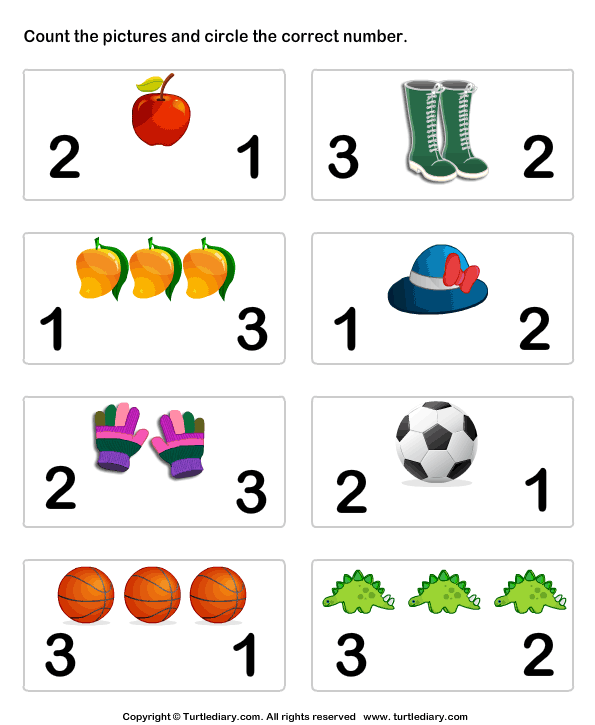
At any age, it can be difficult to understand and remember the material. In order to accurately establish the causes of difficulties in studying the foundations of mathematics, to find ways to overcome them, you need a consultation with a neuropsychologist or a teacher-defectologist.
Activities with multiple children
If there are two or three children of different ages in the family, you can work with each one separately, or you can bring them together. But preschool age is a period when there is a rapid physiological and intellectual development. Even a difference of one year can be very noticeable. Therefore, before starting classes, developmental consultations with a neuropsychologist are useful. He will tell you how to properly organize the learning process in a playful way. Advise on how to make it interesting for preschoolers to study. Then the younger ones will not feel “stupid” next to the developed elders, they will not lose interest in learning. Some assignments must be individual.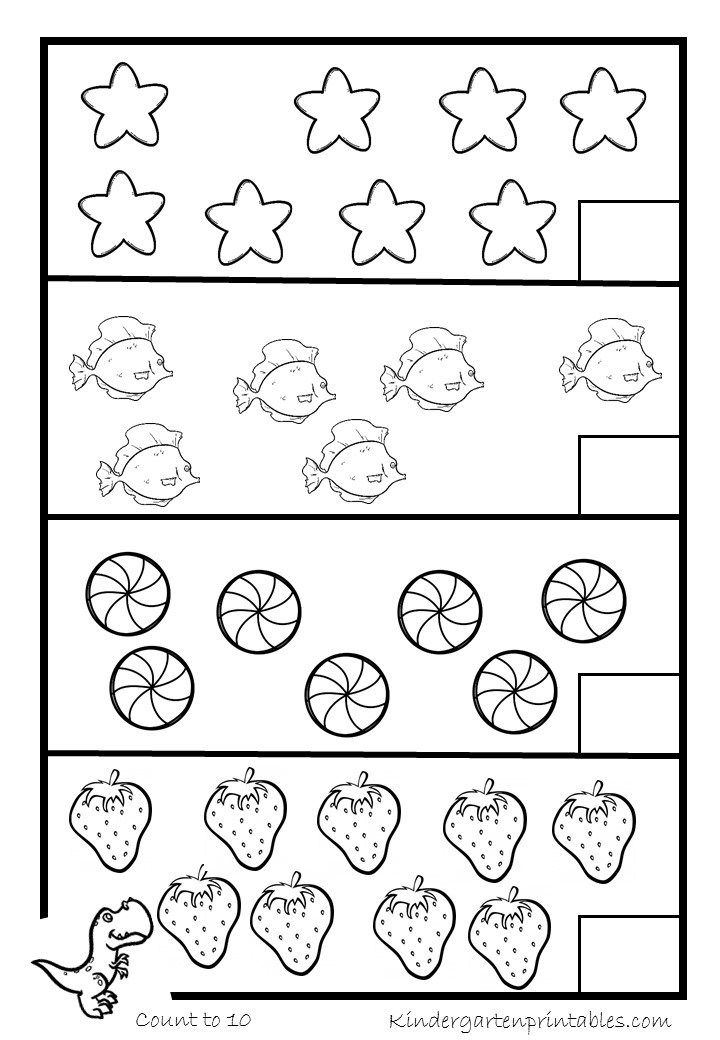 We also need co-op games. For joint classes in preparation for school, it is important that the psychotype matches. Sometimes it is more useful to conduct separate training.
We also need co-op games. For joint classes in preparation for school, it is important that the psychotype matches. Sometimes it is more useful to conduct separate training.
Whims and unwillingness to do mathematics
The formation of logical or spatial thinking requires the child's emotional involvement in the learning process. He should be interested - only then he will comprehend the information and be creative in completing tasks.
If the child does not want to study, postpone the training for a while. If this is repeated regularly or the preschooler loses interest in classes after 5-10 minutes, a consultation with a neuropsychologist or psychologist is needed. These problems may arise due to pedagogical errors of adults and difficulties experienced by the child (fatigue, difficulty concentrating, hyperactivity). Neuropsychological correction will help to eliminate these shortcomings.
Advice for parents
Mathematical development before elementary school will be effective, enjoyable and will help instill a love of learning if the following rules are followed:
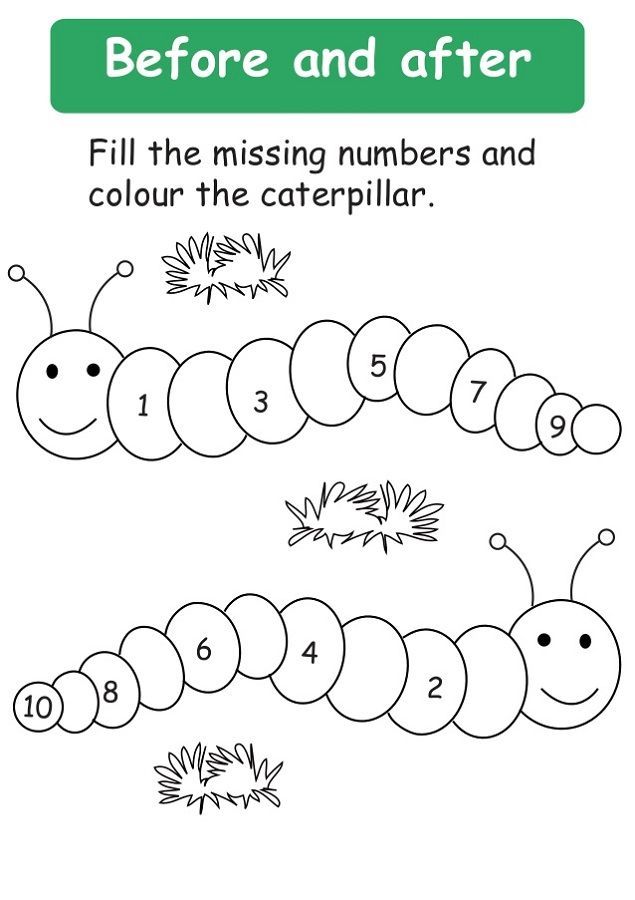
Parents who are planning to start introducing their children to the exciting world of mathematics would benefit from counseling on the development of mathematical abilities. The specialist will select a technique taking into account age, level of development and education. Tell parents what is especially important to pay attention to in education.
Like the article? Tell your friends about it on social networks!
See also
The development of logical thinking in preschoolers Smart, but absent-minded or: What is school absent-mindedness and how to “treat” it The development of logical thinking in children Development of mathematical abilities Development of mathematical thinking Preparing children for math at school Literates Lefties are special kids Long awaited winter holidays How to deal with the third quarter The development of logical thinking in children from 5 to 7 years Summer: one on one with a hyperactive child Summer: one on one with a child. How to quickly learn the multiplication table. Psychologist consultations for parents
How to quickly learn the multiplication table. Psychologist consultations for parents Mathematics education in the preschool educational institution
Mathematical education in the preschool educational institution.
Modern approaches to the formation of the foundations of the mathematical culture of preschoolers.
The entry of children into the world of mathematics begins already in preschool childhood. Mathematics is a universal method of cognition of the surrounding and objective world, and its role in modern science is constantly growing. Changes in conceptual approaches to determining the content and choice of methods for teaching mathematics at school, the widespread use of modern educational technologies have also determined the requirements for the mathematical preparation of preschool children.
Today "mathematics is more than a science, it is a language". The study of mathematics improves the culture of thinking, teaches children to reason logically, educates them in the accuracy of their statements.
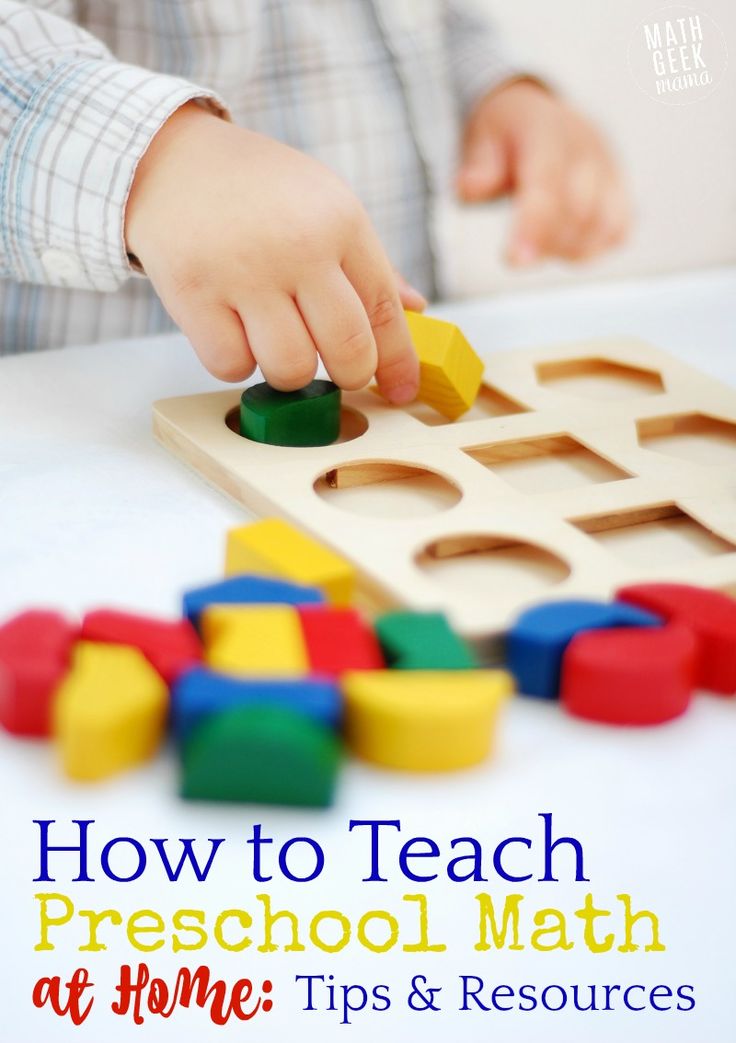 Mathematical knowledge and skills are necessary for the successful adaptation of the child to the processes of social communication, informatization and technologization of society. They broaden the horizons of the child. Mathematical culture is an integral part of the general culture of the individual, and in the period of preschool childhood it has its own characteristics associated with the age and individual capabilities of children.
Mathematical knowledge and skills are necessary for the successful adaptation of the child to the processes of social communication, informatization and technologization of society. They broaden the horizons of the child. Mathematical culture is an integral part of the general culture of the individual, and in the period of preschool childhood it has its own characteristics associated with the age and individual capabilities of children. Traditionally, there are four lines in the content of mathematical education of preschool children: arithmetic, algebraic, geometric and magnitude. Today, taking into account the renewal of the content of preschool education, a fifth content line is added - algorithmic (schemes, models, algorithms). The use of information in a symbolized form contributes to the development of the ability to act mentally, develops logical and creative thinking, and imagination.
The adoption of the Federal State Educational Standard for preschool education will require the need to provide, as a prerequisite, the possibility of self-realization of the child at all stages of work on mathematical development in the preschool education system.
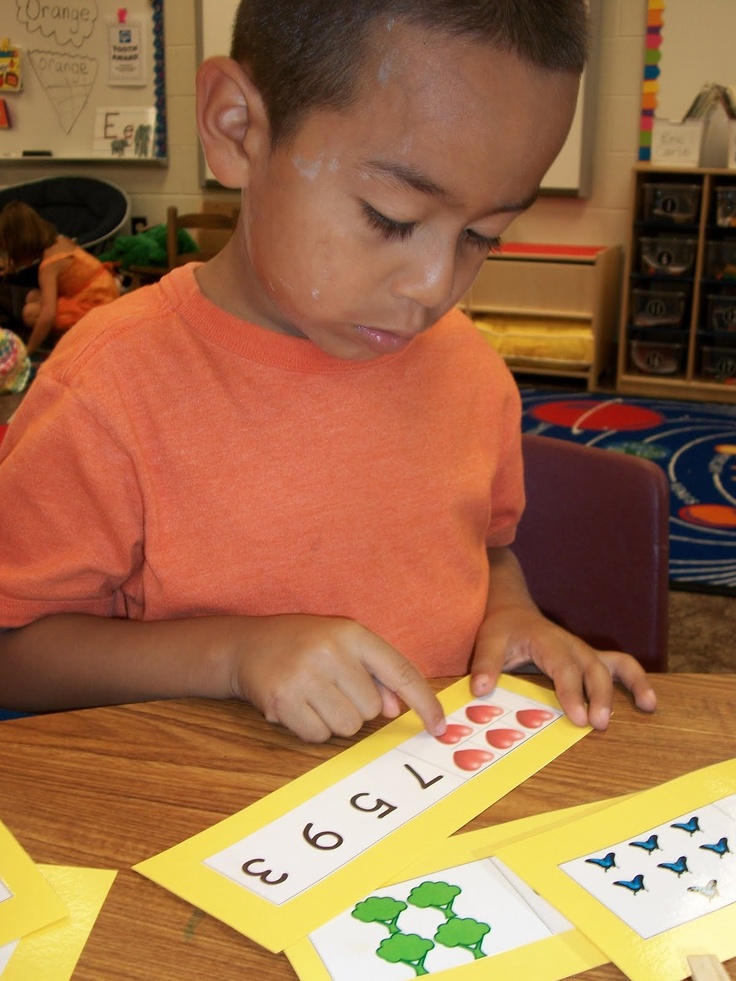
Mathematical material should be revealed during excursions, acquaintance with literary works and small forms of folklore, games with natural material (water, sand, beans, peas, cereals), through game exercises with sensory standards, household items, constructive and didactic games , in problem situations. All these forms vary according to age.
During their stay in kindergarten, a graduate must learn to apply mathematical knowledge and ideas in practical activities that are significant for him: play, children's experimentation, design, work, art and visual.
And as a result of self-realization, the child will develop learning motivation. Thus, the priority tasks of continuous education of children will be solved.
The concept of mathematical education in the Russian Federation
The importance of mathematical education is evidenced by the adoption of the Concept for the Development of Mathematical Education in the Russian Federation (December 24, 2013 (No.
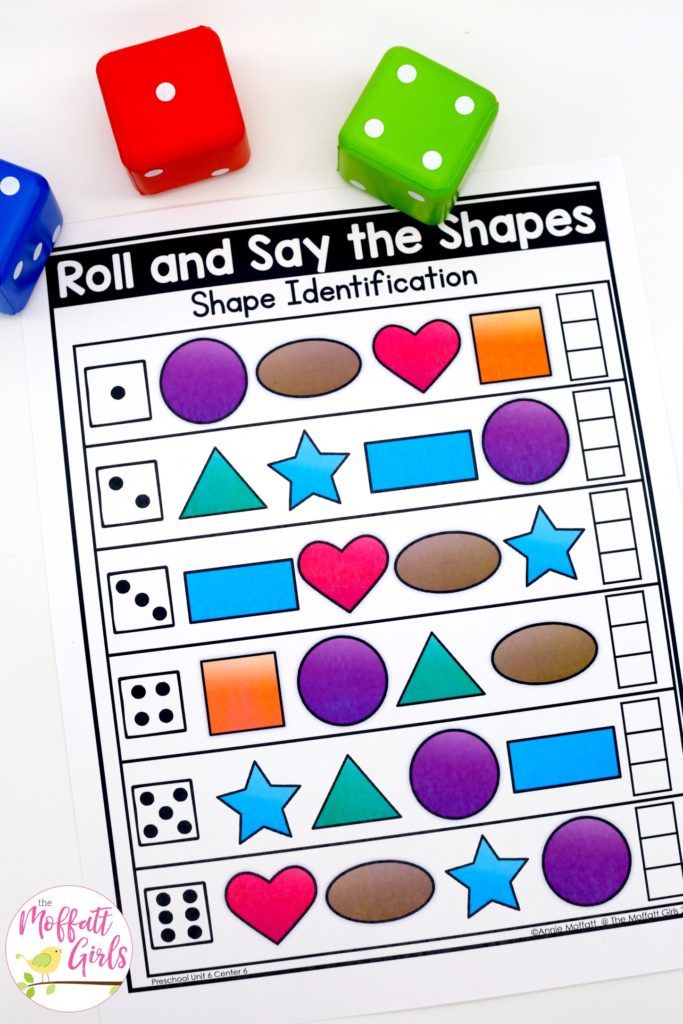 2506 - p)), which is a system of views on the basic principles, goals, tasks and main directions of development of mathematical education in the Russian Federation.
2506 - p)), which is a system of views on the basic principles, goals, tasks and main directions of development of mathematical education in the Russian Federation. Goals of the Concept:
to bring Russian mathematical education to a leading position in the world.
Mathematics in Russia should become an advanced and attractive field of knowledge and activity, the acquisition of mathematical knowledge should be a conscious and internally motivated process
Modernization of the content of curricula for mathematical education at all levels (with ensuring their continuity) based on the needs of students and the needs of society in general mathematical literacy, in specialists of various profiles and levels of mathematical training, in high achievements in science and practice;
Ensuring that there are no gaps in basic knowledge for each student, forming among the participants of educational relations the attitude “there are no children incapable of mathematics”, ensuring confidence in an honest and adequate state final assessment, providing teachers with diagnostic tools (including automated ones) and overcoming individual difficulties;
Ensuring the availability of publicly available information resources necessary for the implementation of curricula of mathematical education, including in electronic format, tools for the activities of students and teachers, the use of modern technologies in the educational process;
Improving the quality of the work of mathematics teachers (from pedagogical workers of general education organizations to scientific and pedagogical workers of educational institutions of higher education), strengthening the mechanisms for their material and social support, providing them with the opportunity to refer to the best examples of Russian and world mathematical education, the achievements of pedagogical science and modern educational technologies, the creation and implementation of their own pedagogical approaches and copyright programs;
Support for leaders in mathematics education (organizations and individual teachers and scientists, as well as structures formed around leaders), identifying new active leaders;
Providing highly motivated students with outstanding mathematical abilities with all the conditions for the development and application of these abilities;
Popularization of mathematical knowledge and mathematical education.
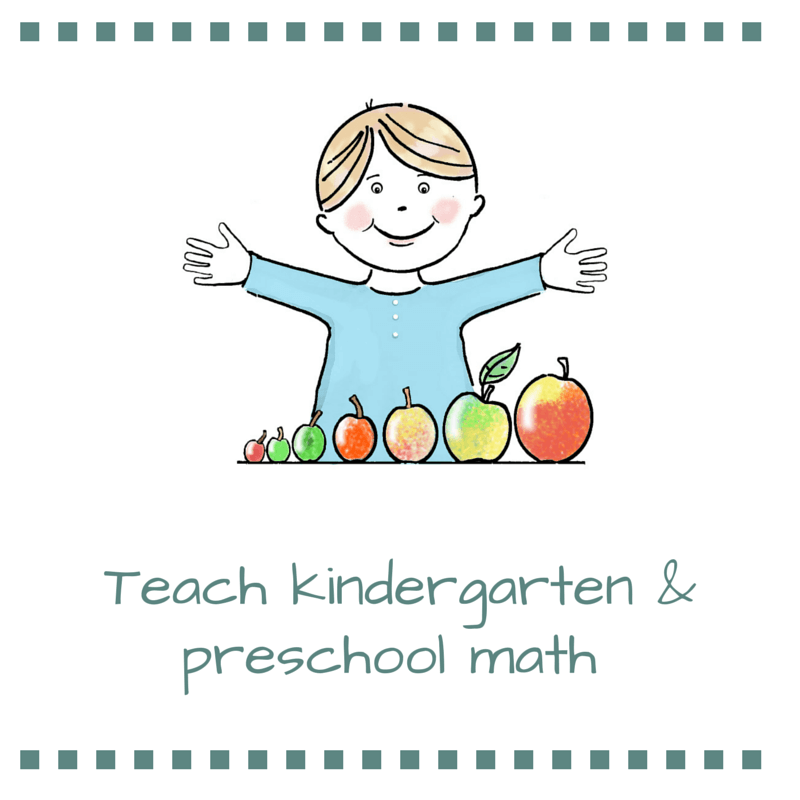
Basic provisions for the implementation of the concept
Every citizen of Russia, regardless of age, has the right to free mathematical education, taking into account his professional orientation and individual intellectual needs. The system of mathematical education provides equal starting opportunities and takes into account the already achieved level at each stage.
Mathematics education is carried out in educational institutions of preschool, basic, vocational and additional education, higher educational institutions, in the family, in the form of self-education, as well as in the form of public educational associations. Responsibility for the results of mathematical education of a citizen of the Russian Federation is jointly borne by the state, parents and the citizen himself.
The main customer of mass general mathematical education is society. The state forms this order at all levels, based on the needs of industry and business, the country's research base, healthcare, public administration and education institutions, and provides support, including funding for this order.
